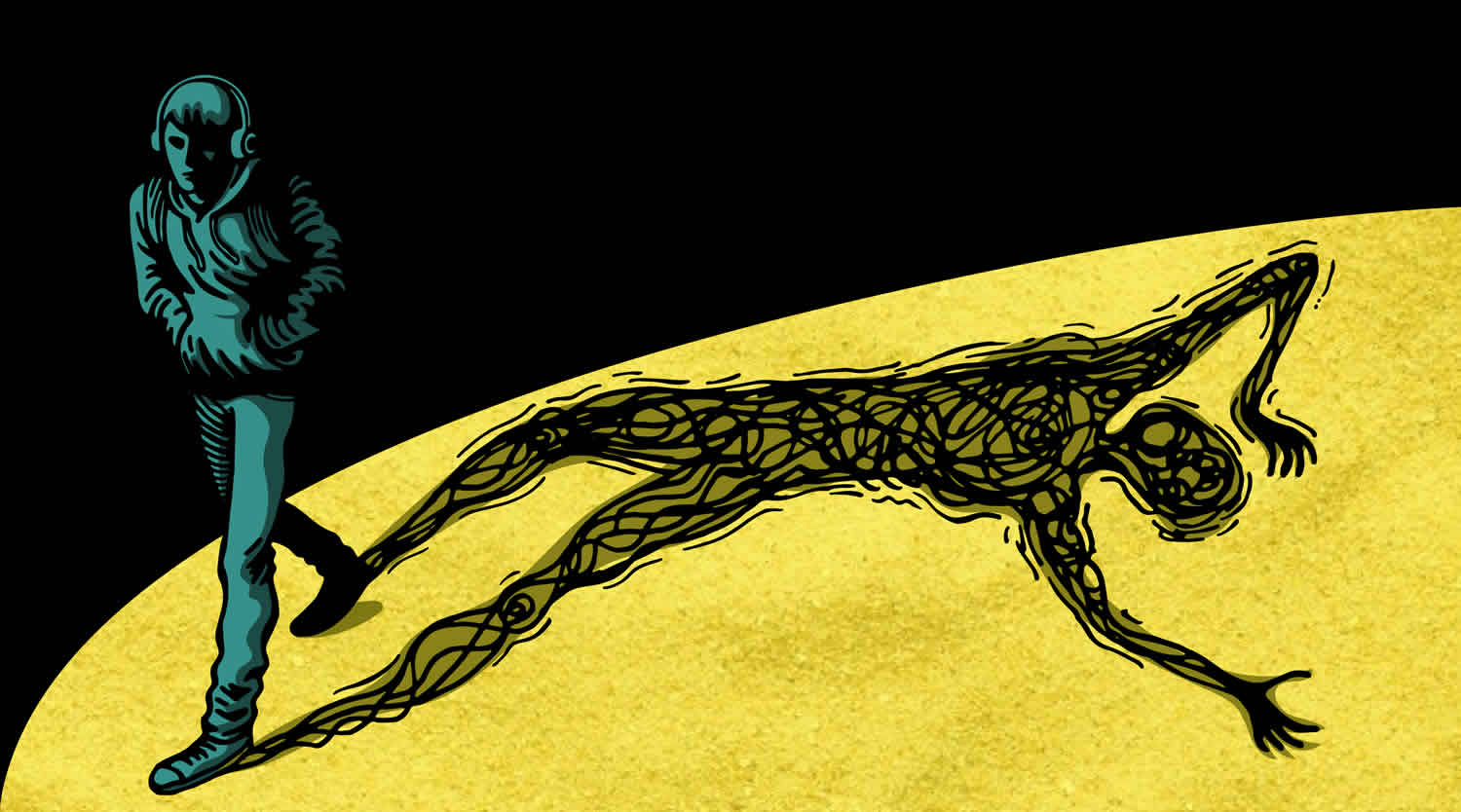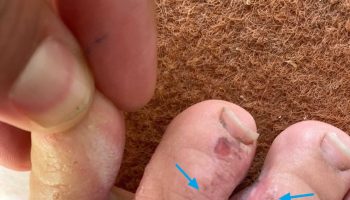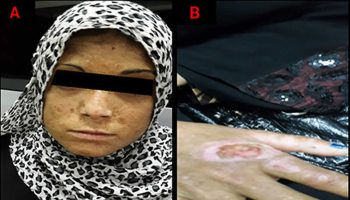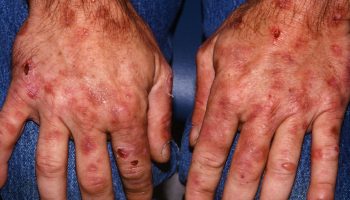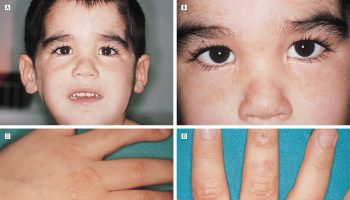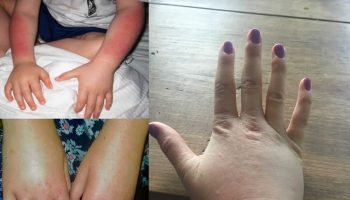Schizophreniform disorder
Schizophreniform disorder is a serious mental disorder that is characterized by the presence of the symptoms of schizophrenia, but it is distinguished from schizophrenia by its shorter duration, which is at least 1 month but less than 6 months 1. The duration requirement for schizophreniform disorder is intermediate between that for brief psychotic disorder, which lasts more than 1 day and remits by 1 month, and schizophrenia, which lasts for at least 6 months. The diagnosis of schizophreniform disorder is made under two conditions 1:
- When an episode of illness lasts between 1 and 6 months and the individual has already recovered, and
- When an individual is symptomatic for less than the 6 months’ duration required for the diagnosis of schizophrenia but has not yet recovered. In this case, the diagnosis should be noted as “schizophreniform disorder (provisional)” because it is uncertain if the individual will recover from the disturbance within the 6-month period. If the disturbance persists beyond 6 months, the diagnosis should be changed to schizophrenia.
Another distinguishing feature of schizophreniform disorder is the lack of a criterion requiring impaired social and occupational functioning. While such impairments may potentially be present, they are not necessary for a diagnosis of schizophreniform disorder. In addition to the five symptom domain areas identified in the diagnostic criteria, the assessment of cognition, depression, and mania symptom domains is vital for making critically important distinctions between the various schizophrenia spectrum and other psychotic disorders.
The prevalence of schizophreniform disorder, like that of schizophrenia, is equally distributed between the sexes, with peak onset between the ages of 18 and 24 years in men and between the ages of 24 and 35 years in women.
Schizophreniform disorder signs and symptoms
A detailed history should be obtained, focusing on the following:
- Time of symptom onset
- Course
- Premorbid functioning
- Precipitants
- Physical health
- Use of medications
- Use of alcohol and other substances
- Family history
- Previous episodes (if any)
It is important to distinguishing schizophreniform disorder from other medical and psychiatric conditions that may present in a floridly psychotic state. However, distinguishing schizophreniform disorder from other medical and psychiatric conditions that may present in a floridly psychotic state can be challenging 2. Such conditions include schizophrenia; brief psychotic disorder; substance-induced mood disorders, depression, and mania; bipolar affective disorder; and depression.
The symptom profile of a schizophreniform disorder is identical to that of schizophrenia; however, the total duration of illness, including prodromal or residual phases, must be less than 6 months. Also, a deterioration in social or occupational functioning, which is required to make the diagnosis of schizophrenia, is not required for schizophreniform disorder.
A diagnosis of brief psychotic disorder requires that symptoms last at least 1 day but no longer than 1 month. A diagnosis of schizophreniform disorder, like a diagnosis of schizophrenia, requires that symptoms be present for at least 1 month.
Although substance-induced psychoses frequently resolve in less than 1 month, sustained substance-induced psychoses in abstinent persons may be indistinguishable from schizophreniform disorder. In the absence of objective diagnostic criteria, the distinction is made on the basis of the extent to which the clinician believes substances have contributed to the current symptom profile.
In bipolar disorder and major depression with mood-incongruent features, the affective symptoms are clearly more prominent. In mood disorder, the psychotic symptoms are secondary and less intense if present. Sometimes, in the absence of an accurate history, diagnosis must be deferred until longitudinal observation or a more accurate history is available.
The following are generally indicated:
- Toxicologic evaluation
- Medical evaluation
- Full Mental Status Examination
Several medications are used to treat schizophreniform disorder. Agent selection depends on whether the depressive or the manic subtype is present. Early treatment with medication, along with good premorbid function, often improves outcomes.
In the depressive subtype, combinations of antidepressants (eg, sertraline, fluoxetine) plus an antipsychotic (eg, haloperidol, risperidone, olanzapine, aripiprazole, or ziprasidone) are used. In refractory cases, clozapine has been used as an antipsychotic agent. In the manic subtype, combinations of mood stabilizers (eg, lithium, carbamazepine, and valproic acid) plus an antipsychotic are used.
Schizophreniform disorder causes
Although doctors and researchers are yet to uncover the exact causes of schizophrenia, there are some factors that they believe could play a major role in leading to the development of this disorder. The following are some of the main factors that might cause you to become schizophrenic:
Patients with schizophreniform disorder and patients with schizophrenia share many anatomic and functional cortical deficits on neuropsychological studies, magnetic resonance imaging (MRI), single-photon emission computed tomography (SPECT), and positron emission tomography (PET).
1. Brain Structure and Chemistry
Today, researchers believe that chemical imbalances involving neurotransmitters like glutamate and dopamine could contribute to the development of this condition. At the same time, if you have schizophrenia, there is a high probability that the structure of your brain will be different from that one someone without this condition.
This is because your ventricles – the fluid-filled cavities at the center of the brain – could be larger if you are diagnosed with schizophrenia. Additionally, you may have less than normal levels of gray matter. Further, some parts of your brain might have more or less activity than a healthy brain.
2. Substance Use and Abuse
When you take mind altering substances – especially during your teens and young adulthood – there is a high risk that you could develop this condition. Additional substance use can also speed up the rate at which schizophrenia develops.
3. Environment
There are some environmental factors that could contribute to the development of this condition. These factors include but are not always limited to:
- Complications during birth
- Exposure to chemicals and viruses when you are in the womb
- Malnutrition before birth
- Psychosocial influences
All these factors are potential risks for the development of schizophrenia. Additionally, if you have an older father, you might end up becoming schizophrenia later on in your life.
4. Genetics
It is now known that schizophrenia is genetic condition that runs in families. Although the condition occurs in less than 1% of the entire American population, studies have reported that 10 percent of people with first degree relatives living with schizophrenia also have a high risk of developing this condition. At the same time, if you have a second degree relative who is schizophrenic, you would also have a high risk of becoming one yourself. In case you have an identical twin who is schizophrenia, there is a 40 to 65 percent chance that you could also develop this mental health disorder as well.
Schizophreniform disorder symptoms
According to the American Psychiatric Association’s Diagnostic and Statistical Manual of Mental Disorders, Fifth Edition (DSM-5) 1, schizophreniform disorder is characterized by the presence of the symptoms of schizophrenia, including delusions, hallucinations, disorganized speech, disorganized or catatonic behavior, and negative symptoms. Schizophreniform disorder, including its prodromal, active, and residual phases, lasts longer than 1 month but less than 6 months.
Unlike schizophrenia, in which prodromal symptoms may develop over several years, schizophreniform disorder requires, among other features, a rather rapid period from the onset of prodromal symptoms to the point at which all criteria for schizophrenia (except duration and deterioration) are met (≤6 months).
The characteristic symptoms of schizophreniform disorder are identical to those of schizophrenia, but schizophreniform disorder is distinguished by its duration. An episode of the disorder (including prodromal, active, and residual phases) lasts at least one month but less than 6 months.
In some cases, the diagnosis is provisional because it is unclear whether the individual will recover from the disturbance within the 6-month period. If the disturbance persists beyond 6 months, the diagnosis should be changed to schizophrenia. Individuals who recover from schizophreniform disorder are projected to have a better functional prognosis.
Another way schizophreniform disorder differs from schizophrenia is that impaired social and occupational functioning are not required criteria. While such impairments may potentially be present, they are not necessary for a diagnosis of schizophreniform disorder. However, most individuals experience dysfunction in several areas of daily functioning, such as school or work, interpersonal relationships, and self-care.
Diagnostic criteria for schizophreniform disorders requires the following symptoms (with one being either 1, 2, or 3):
- Delusions
- Hallucinations (see schizophrenia for elaborated description of symptoms)
- Disorganized speech (communication is incoherent or seems like a “word salad”; frequent derailment of ideas)
- Disorganized or catatonic behavior
- Diminished range of emotional expression (the person appears emotionally withdrawn)
Schizophreniform disorder DSM-5 diagnostic criteria
A. Two (or more) of the following, each present for a significant portion of time during a 1-month period (or less if successfully treated). At least one of these must be (1), (2), or (3) 1:
- Delusions.
- Hallucinations.
- Disorganized speech (e.g., frequent derailment or incoherence).
- Grossly disorganized or catatonic behavior.
- Negative symptoms (i.e., diminished emotional expression or avolition).
B. An episode of the disorder lasts at least 1 month but less than 6 months. When the diagnosis must be made without waiting for recovery, it should be qualified as “provisional.”
‘
C. Schizoaffective disorder and depressive or bipolar disorder with psychotic features have been ruled out because either 1 ) no major depressive or manic episodes have occurred concurrently with the active-phase symptoms, or 2) if mood episodes have occurred during active-phase symptoms, they have been present for a minority of the total duration of the active and residual periods of the illness.
D. The disturbance is not attributable to the physiological effects of a substance (e.g., a drug of abuse, a medication) or another medical condition.
- Specify if:
- With good prognostic features: This specifier requires the presence of at least two of the following features: onset of prominent psychotic symptoms within 4 weeks of the first noticeable change in usual behavior or functioning; confusion or perplexity: good premorbid social and occupational functioning; and absence of blunted or flat affect.
- Without good prognostic features: This specifier is applied if two or more of the above features have not been present.
- Specify if:
- With catatonia.
- Specify current severity:
- Severity is rated by a quantitative assessment of the primary symptoms of psychosis, including delusions, hallucinations, disorganized speech, abnormal psychomotor behavior, and negative symptoms. Each of these symptoms may be rated for its current severity (most severe in the last 7 days) on a 5-point scale ranging from 0 (not present) to 4 (present and severe).
- Note: Diagnosis of schizophreniform disorder can be made without using this severity specifier.
Schizophreniform disorder treatment
The general aims of treatment for schizophreniform disorder are as follows:
- To protect and stabilize the patient
- To minimize the psychosocial consequences
- To resolve the target symptoms with minimal adverse effects
General treatment approaches are as follows:
- Psychotherapy
- Family and social-educational therapies
- Pharmacotherapy
Pharmacotherapy for schizophreniform disorder is similar to that for schizophrenia. Medications used include the following:
- Risperidone
- Olanzapine
- Quetiapine
- Ziprasidone
- Aripiprazole
- Paliperidone (major active metabolite of risperidone)
- Asenapine
- Iloperidone
- Lurasidone
Ziprasidone and aripiprazole are also available in injectable forms, which are less likely to cause acute extrapyramidal side effects.
Electroconvulsive therapy (ECT) is generally reserved for medication-resistant cases of schizophreniform disorder.
Psychotherapy
Virtually all psychotherapeutic treatment modalities used in the treatment of patients with schizophrenia may be helpful in treating patients with schizophreniform disorder. Insight-oriented therapy is not indicated in patients with schizophreniform disorder, because these patients have limited ability to explore and may also be in denial.
Patients may experience a high degree of distress related to the onset of symptoms. Both supportive and educational approaches may help patients manage feelings of turmoil or distress. Group psychotherapy may be helpful; however, patients with schizophreniform disorder who are concerned about their prognosis may become frightened in groups where they are mixed with patients who have chronic schizophrenia. Thus, care must be taken in the formation of therapy groups.
Treatment of patients with schizophreniform disorder frequently involves working with family members and significant others. The family therapy strategies used in working with the families of patients with schizophrenia are highly appropriate for patients with schizophreniform disorder and their families.
In view of the variable course of schizophreniform disorder, brief treatments with clear goals may be helpful initially, though therapeutic strategies must remain flexible to allow for the transition to longer-term treatments for patients who progress to schizophrenia. Similarly, social-vocational function may be preserved in patients with schizophreniform disorder. However, in patients exhibiting impairments in these areas, rehabilitative strategies similar to those described for patients with schizophrenia are appropriate.
Medications
Medications for schizophreniform disorder is similar to that for schizophrenia. [15] At present, atypical antipsychotics (eg, risperidone, olanzapine, quetiapine, and ziprasidone) are commonly used. Dosing strategies appear to be similar to recent approaches to treating patients with schizophrenia, which emphasize the use of minimal but effective doses.
Adequate treatment or prophylaxis of adverse extrapyramidal effects is critical to patient tolerance of neuroleptic treatment and to medication therapy compliance. Neuroleptic-resistant psychosis in patients with schizophreniform disorder may be managed through approaches similar to those used in patients with schizophrenia, including adjustment of the neuroleptic dose, addition of lithium, or addition of anticonvulsant agents and older typical antipsychotics.
Antidepressants may be helpful for mood disturbances associated with schizophreniform disorder, but care must be taken to monitor for possible exacerbations of psychotic symptoms.
Additional antipsychotic agents that have been used to treat schizophreniform disorder include the following:
- Aripiprazole – Unlike its predecessors, this agent is a partial agonist at the dopamine receptors
- Paliperidone – This agent is a major active metabolite of risperidone and the first oral agent that can be given once daily
- Asenapine – Starting and recommended dose is 5 mg sublingually twice daily, not to exceed 10 mg sublingually twice a day
- Iloperidone -– The initial dosage is 1 mg orally twice daily; this is titrated upward daily to reach the target dosage of 12-24 mg/day by day 7 (orthostatic hypotension is the dose-limiting adverse effect)
- Lurasidone – Starting dose of 40 mg daily with at least 350 calorie of nonliquid food is an effective dose, not to exceed 160 mg daily maximum
Ziprasidone is available in injection form to help control acute psychosis; aripiprazole is also now available as an injection. These injections are less likely to cause acute extrapyramidal side effects.
Sajatovic et al 3 concluded in one study that both risperidone and quetiapine improved scores on the Hamilton Depression Rating Scale (HAMD), though quetiapine yielded greater improvement than risperidone did in all patients.
Emsley, in an international, multicenter, double-blind study conducted on 183 patients who had a first psychotic episode and were treated with flexible doses of risperidone or haloperidol for 6 weeks, found that 63% of patients treated with risperidone and 56% of those treated with haloperidol were clinically improved (350% reduction in Positive and Negative Syndrome Scale total scores) 4. Risperidone was tolerated better than haloperidol was.
Post hoc analysis indicated that low dosages of these antipsychotics were efficacious in some patients 4. Other study findings also suggested that low antipsychotic dosages may be required for patients with a first psychotic episode. To optimize therapy for these patients will require trials that are specifically designed to compare low antipsychotic dosages with high dosages.
In a study examining patients with first-episode psychosis to determine the efficacy and safety of olanzapine and haloperidol treatment, Sanger et al 5 found olanzapine to have a better risk-benefit profile than haloperidol in this population. They concluded that because of advantages in safety and efficacy, atypical antipsychotic agents (eg, olanzapine) should be considered a preferred option for managing first-episode psychosis.
The clinical trial carried out by Sanger et al 5 involved a subpopulation of first-episode patients selected from a pool of patients who were diagnosed with schizophrenia, schizoaffective disorder, or schizophreniform disorder. The duration of the patients’ current psychotic episodes had to be 5 years or less, and the patients had to be aged 45 years or younger at the onset of their first psychotic symptoms.
Schizophreniform disorder prognosis
The persistence of symptoms beyond 6 months predicts a worse prognosis for schizophrenia as compared with schizophreniform disorder. Clarke et al 6 demonstrated that a longer period of untreated psychosis was linked with a significantly worse functional and symptomatic outcome at 4 years’ follow-up.
Confusion and perplexity at the height of the psychotic episode correlates with better outcome in schizophreniform disorder. A significant risk of suicide exists in patients with this disorder, especially when they are more likely to go into a depression after the psychotic period 7. Psychotherapy during this phase, aimed at helping patients understand the psychotic episodes, is likely to improve the prognosis and enhance recovery. Drake et al 8 found that patients who acquired better insight into their illness were less likely to experience relapse.
Fraguas et al 9 examined the diagnostic stability and the functional outcome of patients with early-onset psychosis, including schizophreniform disorder, over a 2-year follow-up period; they found a 50% predictability for future psychotic episodes for schizophreniform disorder and cited the presence of negative symptoms as a predictor of lower level of functioning at the end of 2 years.
According to the American Psychiatric Association, approximately two thirds of patients diagnosed with schizophreniform disorder progress to a diagnosis of schizophrenia. According to Benazzi et al 10, patients with a good prognosis tend to be retrospectively associated with the affective spectrum of diagnoses rather than the schizophrenic.
According to Troisi et al 11, in some patients with a schizophreniform disorder, the presence of negative symptoms and poor eye contact appear to be prognostic of a poor outcome. Studies have not yet elicited a consensus about whether ventricular enlargement is predictive of poor outcome in patients with a schizophreniform disorder.
- American Psychiatric Association. Diagnostic and Statistical Manual of Mental Disorders, Fifth Edition. Washington, DC: American Psychiatric Association; 2013.[↩][↩][↩][↩]
- Ayesa-Arriola R, Rodríguez-Sánchez JM, Suero ES, Reeves LE, Tabarés-Seisdedos R, Crespo-Facorro B. Diagnosis and neurocognitive profiles in first-episode non-affective psychosis patients. Eur Arch Psychiatry Clin Neurosci. 2016 Oct. 266 (7):619-28.[↩]
- Sajatovic M, Mullen JA, Sweitzer DE. Efficacy of quetiapine and risperidone against depressive symptoms in outpatients with psychosis. J Clin Psychiatry. 2002 Dec. 63(12):1156-63.[↩]
- Emsley RA. Risperidone in the treatment of first-episode psychotic patients: a double-blind multicenter study. Risperidone Working Group. Schizophr Bull. 1999. 25(4):721-9.[↩][↩]
- Sanger TM, Lieberman JA, Tohen M, Grundy S, Beasley C Jr, Tollefson GD. Olanzapine versus haloperidol treatment in first-episode psychosis. Am J Psychiatry. 1999 Jan. 156(1):79-87.[↩][↩]
- Clarke M, Whitty P, Browne S, McTigue O, Kamali M, Gervin M, et al. Untreated illness and outcome of psychosis. Br J Psychiatry. 2006 Sep. 189:235-40.[↩]
- Lee SJ, Kim B, Oh D, Kim MK, Kim KH, Bang SY, et al. White matter alterations associated with suicide in patients with schizophrenia or schizophreniform disorder. Psychiatry Res Neuroimaging. 2016 Feb 28. 248:23-9.[↩]
- Drake RJ, Dunn G, Tarrier N, Bentall RP, Haddock G, Lewis SW. Insight as a predictor of the outcome of first-episode nonaffective psychosis in a prospective cohort study in England. J Clin Psychiatry. 2007 Jan. 68(1):81-6.[↩]
- Fraguas D, de Castro MJ, Medina O, Parellada M, Moreno D, Graell M, et al. Does diagnostic classification of early-onset psychosis change over follow-up?. Child Psychiatry Hum Dev. 2008 Jun. 39(2):137-45.[↩]
- Benazzi F, Mazzoli M, Rossi E. A follow-up and family study of DSM-III-R schizophreniform disorder with good prognostic features. Eur Arch Psychiatry Clin Neurosci. 1992. 242(2-3):119-21.[↩]
- Troisi A, Pasini A, Bersani G, Di Mauro M, Ciani N. Negative symptoms and visual behavior in DSM-III-R prognostic subtypes of schizophreniform disorder. Acta Psychiatr Scand. 1991 May. 83(5):391-4.[↩]
